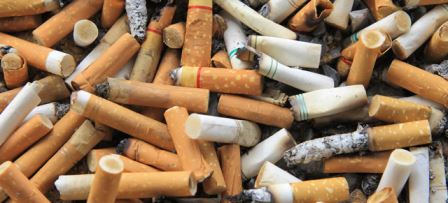AUSTRALIAN SCIENTIST FINDS A NEW WAY OF TURNING CIGARETTE BUTTS INTO BRICKS

Millions of scientific discoveries made by geniuses from across the globe have made us humans, who we are today. Each new discovery comes with a promise of a better future and also forms the basis of the next discovery, in order. One such discovery, made by an Australian scientist, Dr. Abbas Mohajerani promises to turn cigarette butts into something much more valuable. His study concludes that cigarette butts can be used to manufacture bricks and not just average bricks, but high quality bricks with better insulation properties.
Dr. Mohajerani found that by adding a very little amount of cigarette butts (only 1 percent) to the clay mixture reduces the energy required to fire the bricks by half. He also found that because of the cigarette butts the bricks had better insulation properties and a stronger core. His paper on the discovery reveals that there are billions of tonnes of cigarette butts on our planet and if just 2.5 percent of the world’s total brick manufacturing units utilize just 1 percent cigarette butts each, we can end the cigarette butt pollution completely.
This type of pollution is very common and can be found in every corner of the world since 20 percent of the total human population smoke cigarettes on everyday basis. So you can find cigarette butts everywhere – on the streets, in the parks, on beaches, in the oceans, and everywhere else as well. Currently, the butts are disposed-off by dumping them in landfills or in drains. But that’s not a very smart idea. The heavy metals these butts contains, including arsenic, can be absorbed by the soil which ultimately results in water pollution.
Dr. Mohajerani’s findings can help brick manufacturers in saving up to 20 percent of their energy consumption. If we could turn waste which is available in such a large quantity into something so useful, we should definitely try to make that work. And that’s exactly what Dr. Mohajerani is hoping to achieve.





